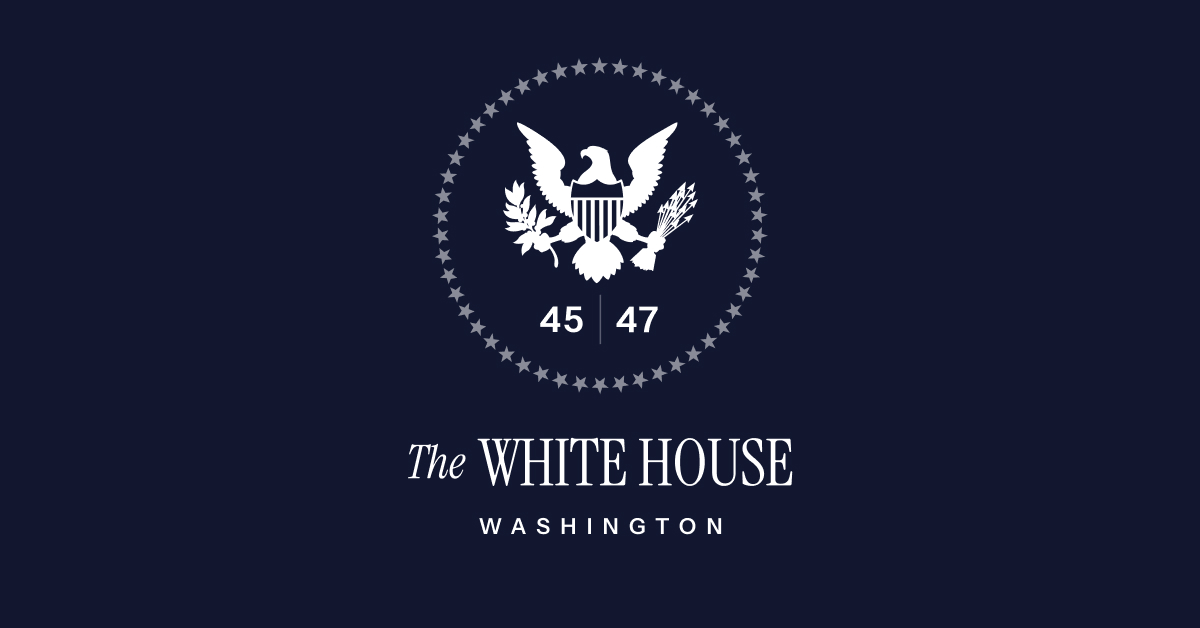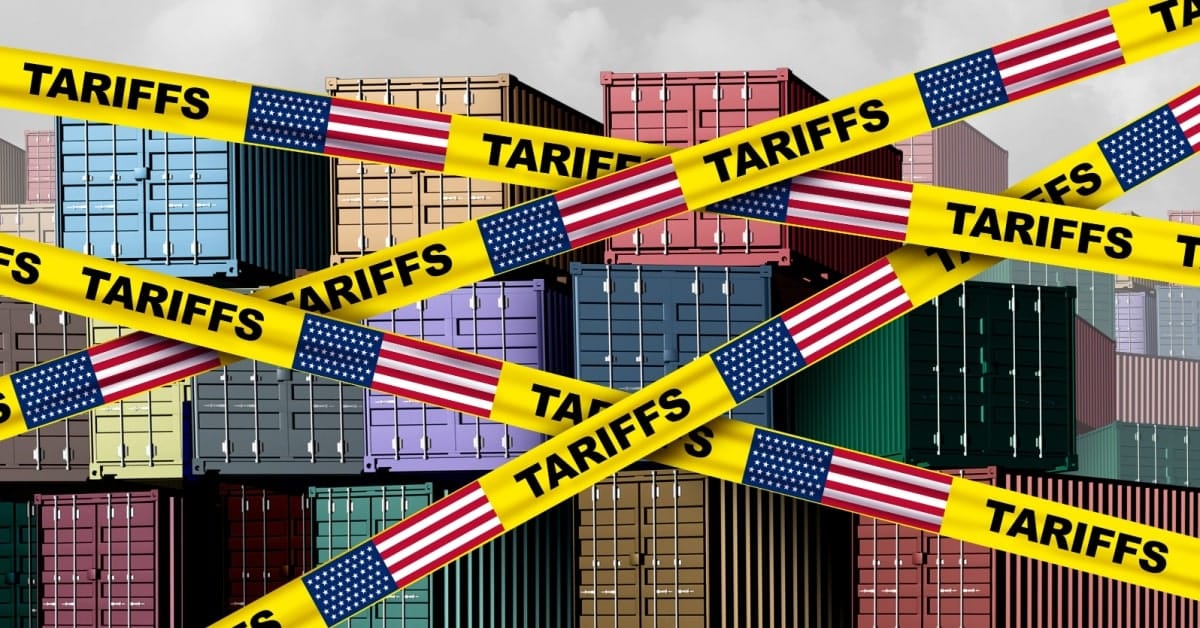Trump Ends De Minimis Exemption For China, Other Countries To Follow
UPDATE 7-4-25
Passage of the One Big Beautiful Bill Act has finally given shippers a definite deadline for the end of the de minimis exemption for all countries - July 1, 2027.
Here's what the new law says regarding repeal of the commercial de minimis exception:
SEC. 70531. MODIFICATIONS TO DE MINIMIS ENTRY PRIVILEGE FOR COMMERCIAL SHIPMENTS...
...(b) Repeal of Commercial Shipment Exception.--
- (1) Repeal.--Section 321(a)(2) of such Act (19 U.S.C. 1321(a)(2)) is amended by striking of this Act, or and all that follows through `subdivision (2); and and inserting``of this Act; and''.
- (2) Conforming repeal.--Subsection (c) of such section 321,as added by subsection (a) of this section, is repealed.
- (3) Effective date.--The amendments made by this subsection shall take effect on July 1, 2027.
That means starting July 1, 2027, commercial shipments coming into the US from any country will be subject to applicable customs duties and tariffs, even if they are under $800.
The existing changes removing the de minimis exception for goods from China are still in effect, this update simply sets a specific timeline for when the same will be applied to other countries as well.
The timeclock on de minimis exemption for goods from China is ticking down as new Executive Orders signed by President Trump set May 2nd end date, with other countries set to follow as soon as systems to collect duties and taxes are in place.
The changes come as part of Trump's sweeping tariff and trade policy overhaul, with many focused on the impact on Chinese goods.
A fact sheet put out by the White House lays out how the new policies will work starting May 2nd, with different tariff amounts depending on whether items are sent through international postal services or other private carriers.

CLOSING LOOPHOLES IN THE TARIFF SYSTEM: Today, President Donald J. Trump signed an Executive Order eliminating duty-free de minimis treatment for low-value imports from China, a critical step in countering the ongoing health emergency posed by the illicit flow of synthetic opioids into the U.S.
Following the Secretary of Commerce’s notification that adequate systems are in place to collect tariff revenue, President Trump is ending duty-free de minimis treatment for covered goods from the People’s Republic of China (PRC) and Hong Kong starting May 2, 2025 at 12:01 a.m. EDT.<
- Imported goods sent through means other than the international postal network that are valued at or under $800 and that would otherwise qualify for the de minimis exemption will be subject to all applicable duties, which shall be paid in accordance with applicable entry and payment procedures.
- All relevant postal items containing goods that are sent through the international postal network that are valued at or under $800 and that would otherwise qualify for the de minimis exemption are subject to a duty rate of either 30% of their value or $25 per item (increasing to $50 per item after June 1, 2025). This is in lieu of any other duties, including those imposed by prior Orders.
Carriers transporting these postal items must report shipment details to U.S. Customs and Border Protection (CBP), maintain an international carrier bond to ensure duty payment, and remit duties to CBP on a set schedule.
CBP may require formal entry for any postal package instead of the specified duties.
The Secretary of Commerce will submit a report within 90 days assessing the Order’s impact and considering whether to extend these rules to packages from Macau.
But shipping and logistics experts reviewing the full slate of changes announced yesterday are warning that the implications for de minimis go far behind just China and will in fact apply to all countries once the US has systems in place to handle the collection of duties.
Founder and CEO of ShipHero, Aaron Rubin found the important details buried in the main tariff Executive Order.
The 321 aka de minimis loophole is over FROM ALL TARIFFED COUNTRIES once systems are ready, with the only exceptions being bonafide gifts and items you bring into the US while traveling.
— Aaron Rubin (@AaronandML) April 2, 2025
It's buried in the main tariff executive order.
Founder and CEO of Flexport, Ryan Petersen, also posted about the EO, calling it a "bombshell" that will impact all countries.
Buried in today's Executive Order on tariffs is a bombshell:
— Ryan Petersen (@typesfast) April 2, 2025
Duty free "de minimus" shipping is being eliminated from ALL countries as soon as the systems are ready.
Here's what the main tariff executive order says:

First, section (a) clearly defines that this Executive Order applies to all items imported into the US, unless there is a specific exemption stated elsewhere in the order - which means almost all items from all countries are included in this order.

Then in section (h), the Executive Order goes on to say that duty-free de minimis treatment will still be available for articles described in subsection (a), but only until the Secretary of Commerce notifies the President that adequate systems are in place to process duties - at which time, the de minimis exemption will be ended.

(h) Duty-free de minimis treatment under 19 U.S.C. 1321(a)(2)(A)-(B) shall remain available for the articles described in subsection (a) of this section. Duty-free de minimis treatment under 19 U.S.C. 1321(a)(2)(C) shall remain available for the articles described in subsection (a) of this section until notification by the Secretary of Commerce to the President that adequate systems are in place to fully and expeditiously process and collect duty revenue applicable pursuant to this subsection for articles otherwise eligible for de minimis treatment.
After such notification, duty-free de minimis treatment under 19 U.S.C. 1321(a)(2)(C) shall not be available for the articles described in subsection (a) of this section.
Since subsection (a) applies to all countries/goods that do not have an explicit exemption, that means once systems are ready, the de minimis exception will be going away for the vast majority of goods from all countries - assuming no other changes to the policies or additional Executive Orders in the meantime.
As Petersen points out in a longer X thread on the topic, systems readiness was widely regarded as the sticking point holding up removal of the exemption for China and now that the administration says they are ready to handle that volume starting May 2nd, that will no doubt accelerate the timeline for systems to be ready to expand to cover all countries.
The government has been hard at work on upgrading those systems, and so presumably that work will now carry over to accelerate the timeline for turning off de minimis shipping from all countries.
— Ryan Petersen (@typesfast) April 3, 2025
Petersen says Flexport predicts these changes will have massive ripple effects on markets, consumers, and logistics as a significant percentage of direct to consumer ecommerce merchants currently depend on the program to be able to ship duty free to their US customers.
That program will no longer allow for duty avoidance, and combined with the massive new duties imposed on Vietnam, Cambodia, Malaysia, Thailand, India, Bangladesh, and other country in Asia, it will put the business models of many companies at risk.
— Ryan Petersen (@typesfast) April 3, 2025
He also says be believes the apparel industry, and fulfillment companies which cater to them, will be particularly hard hit.
The fulfillment companies in Mexico and Canada and their employees that run these operations for those brands will be badly affected.
— Ryan Petersen (@typesfast) April 3, 2025
Of course, it's always possible the Trump administration could change course pr provide exemptions which would alter the tariff and de minimis landscape, as we saw last month.

Attempts to drop the de minimis exemption for China earlier this year were put on hold after USPS suspended package acceptance from China and Hong Kong due to a massive backlog caused by the sudden changes in duties on those packages.

But this latest Executive Order appears to be structured specifically to disincentivize using USPS for some shipments, likely in a bid to try to keep volume under control to avoid another backlog.
Starting May 2, goods from China at/under $800 sent through international postal networks will be subject to a duty rate of either 30% of their value or $25 per item (increasing to $50 per item after June 1, 2025).
Assuming that is applied on a "whichever is greater" basis, that would make sending low value shipments through postal services much less economically viable.
Goods from China at/under $800 sent by other means will be subject to the duty rate, which is reportedly 54% when adding yesterday's tariff announcement to existing tariffs.
That would make paying 54% a better deal on shipments under ~$46 in May, going up to under ~$92 in June, which means those lower value shipments will likely be shipped through other means besides postal systems.
While systems will still need to be in place to collect duties regardless of which shipping methods/carriers are used, that incentive structure could at least help to avoid another situation where USPS has to shutdown package acceptance due to a massive backlog.
Stay tuned for updates in this developing story and let us know in the comments below how the end of the de minimis exemption from all countries will impact your ecommerce business!





















